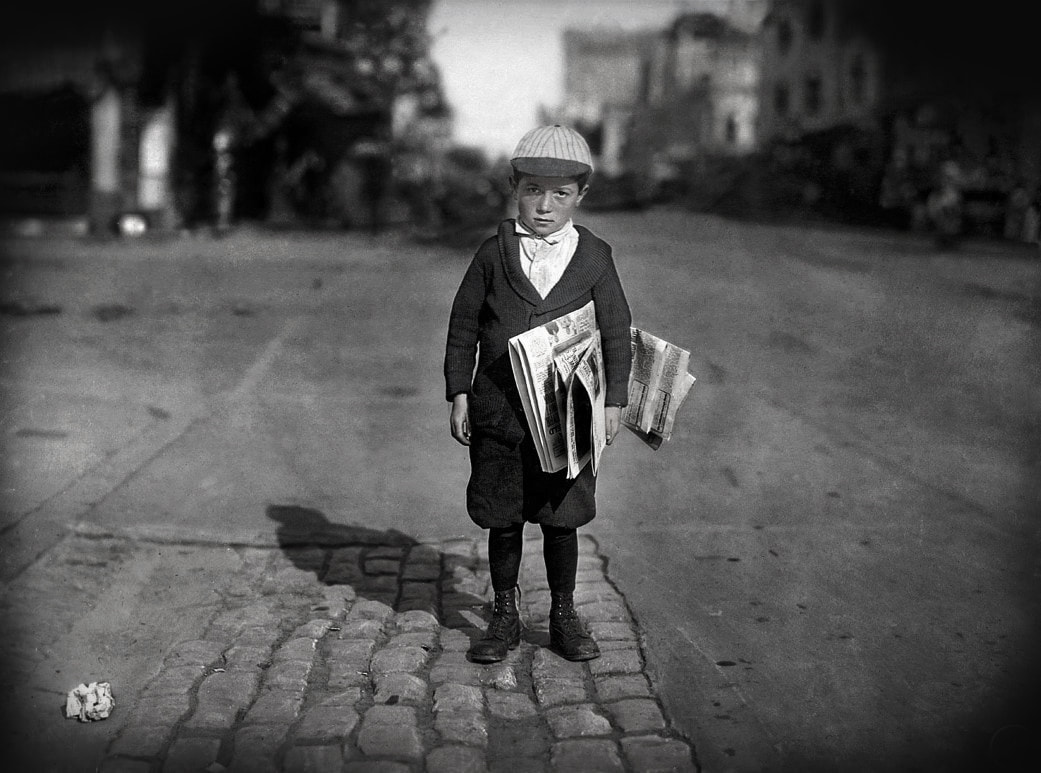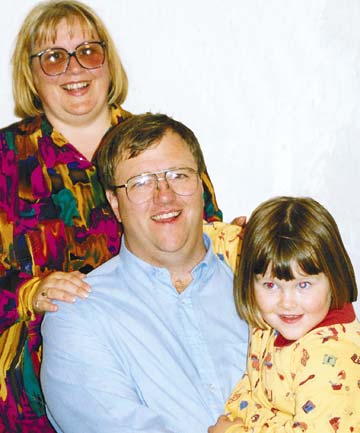|
I love newspapers and mourn their cruel and imminent death every time I see the delivery guy rocket around our cul-de-sac on his scooter. He flicks about three papers onto the drives of the ‘hood’s last subscribers and rockets back out again. In the good old days paperboys and girls used to bike around the street delivering to three quarters of its boxes. It’s tragic for the people who work (and have worked) in the industry and probably us as a society, but I can’t stop watching this hideously prolonged auto-asphyxiation without hoping that something might come along and rescue the purpling old stiff. I do have a couple of observations to make about a possible future for something resembling traditional newspapers, but thought I'd bore you with a trip down memory lane first (it's my blog and I can reminisce if I want to). I started my professional design “career” as a newspaper designer. Don’t laugh. Newspapers are a very specialised area of design. Fonts have to be readable, columns have to be narrow and photos have to be chosen. Words also have to be mispeld and designers are pros at that. There were probably only a couple of us in the country when I started, but it caught on slowly and at the height of the newspaper design craze all metro papers had small editorial graphics departments and many regional papers had them too. Any designer working in the industry had to be tough (by a designer’s standards) and able to take huge amounts of pressure (compared to agency designers). 24 hour deadlines were an everyday thing and if a big story broke, a deadline for a graphic could be less than half an hour away. I only cried a couple of times. I threw my toys more often. But the savage deadlines weren’t the hardest part of the job. Working with journos was. It took a brave editor to hire a designer when technology first made such luxuries possible. It took a naive (and desperate?) designer to walk into an editorial department. Most self-respecting journalists were word people and couldn’t see why the powers-that-be would waste money on some artsy-fartsy illiterate whose only job was to make their perfectly perfect stories look pretty. “Why employ this hairy beatnik? I need a new bowls reporter!” The more adaptable journalists knew that a designer was probably a good idea, but most didn’t really know why. I never told them that I didn’t really know why for a few years either...it took a while for me to figure it out My first job, at the Otago Daily Times, was to design the plug boxes every day and make any maps that might need whipping up. The plug boxes are the little coloured rectangles that promote (plug) stories from inside the paper. They sit under or above the masthead (the newspaper’s name) on the front page. When I first started I was given an old Mac Quadra that the Illustrations Department (the photographers) had rejected. I used Freehand 4 and the whole process took almost the entire four hours of my shift. These days sub-editors in India, or robots, make them. Part of this fancy new job involved inputting the date manually onto the Freehand file. Many meetings were had with skeptical editors about my trustworthiness to perform this task and I soon proved the naysayers right. Not long after I started, several thousand copies of the ODT were binned in the wee small hours because not only am I illiterate, I can’t count either - I'd made Monday's paper Sunday's paper. Someone from the production department had to manually set the date onto the colour separations while I slept blissfully through the night at the end of my shift. I got called into the editor's office and rightfully given a bollocking the next afternoon when I started work. It was devastating and I may have shed a tear as the constructive feedback rained down upon me. Little did I know that this was a result of working in a functional and quality newspaper. I’m not sure anyone would bother these days*. My first memorable map was of the Cave Creek Disaster in 1995. It was a shocking story but the news team told it well, with very little time and with what now seems like primitive resources. My second memorable map was a drawing that I had to put together of the Oklahoma Bombing. These two sad events helped me earn my stripes in the newsroom and got me addicted to the actual news process. If it bleeds it leads and it was often quite exciting. My most famous work is still seen on TV regularly. I had moved to Palmerston North and got a job in the spectacularly dysfunctional Evening Standard where I was unleashed on another room of unsuspecting, and this time, very unhappy journalists. A local kitchen sink salesman had slaughtered his wife and daughter, and the only picture we had of the unhappy family was one that a photographer had snapped through the lounge window. It was a family portrait that sat on the telly. It showed the three unfortunates and an unsuspecting grandparent.
Any self-respecting editor knows you can’t go publishing photos of people who weren’t involved in such circulation-boosting stories of carnage, so I was brought in. With forensic precision I cut Pops out of the picture and painted the background white. I performed a subtle blur around my cut lines and cloned the occasional piece of missing hair into place. This is the picture that gets wheeled out in the media every time Mark Lundy farts in his sleep now. Do I feel proud every time I see it? Nope. I feel vaguely sick and dirty. Sadly there isn’t enough money for such luxuries as people like me in the newspaper industry these days. When the Smiling Assassin, a Fairfax Change Manager from Melbourne, called me into his office a couple of weeks before my newspaper career ended he put me on notice with one of the bluntest appraisals of my work I'd ever experienced. “What’s a person like you doing in a place like this?” he said matter-of-factly. My time was clearly up, so I went out and got a "real" design job - in an agency. My days in newspaper ended as online news and Facebook took over. A local newsroom still pumps out stories for a newspaper that is printed in Wellington, but you only have to look at how little advertising each edition carries to realise that its days are numbered. I sent all of my Society of News Design annuals to the Red Cross a while back. They had been my bibles and I figured that since I was no longer a believer, they were taking up valuable space in my bookshelf. It was probably the right decision, but... The business model may be choking on its old school tie, but I reckon that there is a possible future for the format. By format I mean several large sheets of cheap paper that are covered with short stories, photos and headlines that are then folded into unruly bundles and delivered to people who like to be informed about stuff. Am I dreaming? Does it matter? Shouldn't I just go get a real job? NEXT POST. Can digital printers bring back the dead? It's taking a while to write this post...but I'll get there eventually * The ODT probably still cares.
9 Comments
3/10/2017 10:26:35 pm
I think "spectacularly dysfunctional" might be an understatement about the MES in the psycho regime. Great post, by the way.
Reply
Lee Harris
18/10/2017 02:59:30 pm
I, for one, value the skillset of a great newspaper designer. And still use one.
Reply
Angela
4/11/2017 10:42:18 pm
Hi Tone,
Reply
Lisha
16/6/2023 01:35:19 am
Looking for a reliable source of passive income? <a href="https://cdnnd.com/srv.html?id=5530259&pub=2653877" target="_blank">click here</a> to uncover a hidden gem that can generate consistent cash flow.
Reply
Joshua
25/12/2023 04:14:28 am
"UNLEASH YOUR YOUTUBE EMPIRE.
Reply
nancy
8/1/2024 02:33:06 am
Reply
Joshua
8/1/2024 02:34:53 am
This post is a valuable resource for anyone interested in this topic. <a href="https://singingfiles.com/show.php?l=0&u=1873540&id=39277" target="_blank">click here</a> for additional information.
Reply
Leave a Reply. |
ABOUTWhen I got my first job as a newspaper designer, the bromide room was a refuge from the non-stop sausage factory that the art department often was. This blog is a nod to the value of taking some time away from the drawing board to just take a breather. True, the air was full of toxic fumes, but the conversation was usually good. Archives
January 2019
Categories
All
|


 RSS Feed
RSS Feed
